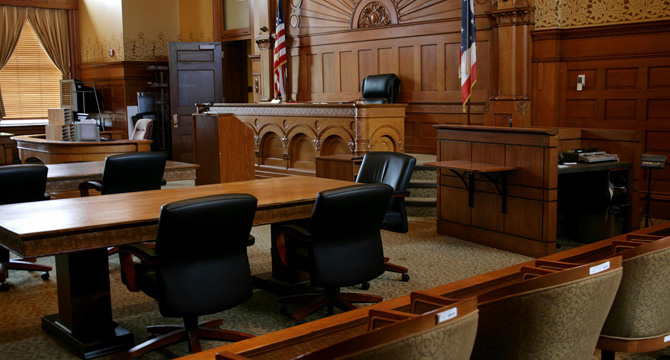CAFC Vacates USPTO Single Reference Obviousness Rejection For Inadequate Showing Of Expectation of Success

In a split decision with Judge Lourie dissenting, the Federal Circuit vacated an obviousness rejection that had been affirmed in an ex parte appeal to the USPTO Patent Trial and Appeal Board. The decision was rendered in In re Stepan Co., where the majority found inadequate explanation of the reasonable expectation of success elements of obviousness, and also found that the PTAB had “improperly shifted to Stepan the burden of proving patentability.”
The Patent Application At Issue
The patent application at issue was Stepan’s U.S. Application 12/456,567, directed to herbicidal formulations that have a certain surfactant system that permits high strength glyphosate salt concentrations with a high cloud point–the temperature at which a solution becomes cloudy. Claim 1 was the independent claim at issue.
1. An ultra-high load, aqueous glyphosate salt-containing concentrate comprising:
a. water;
b. glyphosate salt in solution in the water in an amount greater than about 39 weight percent of acid equivalent ….
c. a surfactant system …. comprising:
i. from about 10 to about 60 weight percent, based on the weight of the surfactant system, of one or more dialkoxylated alkylamines;
ii. from about 5 to about 30 weight percent, based on the weight of the surfactant system, of one or more water miscible solubilizers; and
iii. from about 30 to about 75 weight percent, based on the weight of the surfactant system, of one or more amine oxides;
said concentrate having a cloud point above at least 70ºC or no cloud point when the concentrate is heated to its boiling point.
The Obviousness Rejection At Issue
The examiner rejected claim 1 as obvious over a single reference, US 2003/0087764, directed to “Stable Liquid Pesticide Compositions” (“Pallas”). According to the Federal Circuit decision:
- Pallas discloses highly-loaded glyphosate compositions containing surfactants having a cloud point of at least 50ºC and ideally 60ºC.
- The examiner found that Pallas teaches preferred surfactants “includ[ing] the amine oxide lauryl dimethylamine oxide (Chemoxide [L70]) and the dialkoxylated amine diethoxylated tallow amine (Ethomeen T).”
- The examiner found that Pallas teaches that a surfactant component “may optionally contain glycols such as polypropylene glycol.”
- With regard to the claimed ranges of surfactants, the examiner asserted that “it is routine optimization to select and adjust the surfactants to this range since Pallas teaches the surfactant component comprises any combination of surfactants.”
- With regard to the claimed cloud point, the examiner asserted that achieving this cloud point would be a matter of “optimizing the formulation” because Pallas teaches the ideal cloud point should be above 60ºC.
The PTAB Decision At Issue
As summarized in the Federal Circuit decision, the PTAB affirmed the rejection because:
- It found Stepan failed to provide evidence that it would not have been routine optimization for a skilled artisan to select and adjust the claimed surfactants to achieve a cloud point above at least 70ºC “since Pallas teaches the surfactant component comprises any combination of surfactants” and “teaches the ideal cloud point should be above 60[ºC].”
- It found Stepan failed to establish the criticality of its claimed range of surfactants, showing neither that a 70ºC cloud point was unexpectedly good nor that the prior art was silent on the connection between optimizing surfactants and cloud point.
The Federal Circuit Decision
The Federal Circuit decision was authored by Judge Moore and joined by Judge O’Malley. Judge Lourie dissented.
The majority criticized the PTAB decision for “fail[ing] to explain why it would have been ‘routine optimization’ to select and adjust the claimed surfactants and achieve a cloud point above at least 70ºC,” and for failing to provide a “rational underpinning explaining why a person of ordinary skill in the art would have arrived at the claimed invention through routine optimization.”
In response to the USPTO’s arguments that Pallas shows that it was routine to combine surfactants and test their cloud points, the majority responded that such evidence “could be relevant to whether there would have been a motivation to combine the claimed surfactants with a reasonable expectation of [success],” but the PTAB “did not make any of these findings.”
Why Would There Have Been An Expectation Of Success?
The majority emphasized that the PTAB had not “articulate[d] why a person of ordinary skill in the art would have had a reasonable expectation of success.” On this point, the majority noted, that Pallas’ teaching that the ideal cloud point should be above 60ºC does not indicate whether a skilled artisan would have had a reasonable expectation of success.” Quoting its 2007 decision in Pfizer, Inc. v. Apotex, Inc., the majority explained:
“[T]o have a reasonable expectation of success, one must be motivated to do more than merely to vary all parameters or try each of numerous possible choices until one possibly arrived at a successful result.” …. Pallas’ teachings that “any combination” of surfactants may be used and that a cloud point above 60ºC is desired fails to illuminate why a skilled artisan would have selected the claimed combination of surfactants and reasonably expected a cloud point above at least 70ºC.
Improperly Shifting the Burden
The majority also explained that the PTAB “erred when it shifted the burden of proving patentability to Stepan.” Although the PTAB had relied on case law applicable when a claimed range is within the prior art, the majority noted that “[t]his line of case law does not apply here for two reasons”:
- First, for the reasons discussed above, the Board did not establish a prima facie case of obviousness becasue it failed to adequately articulate its reasoning.
- Second, Stepan’s ’567 application does not merely claim a range of surfactants that is within or overlaps with the range of surfactant systems taught by Pallas.
The majority elaborated:
The claimed surfactant system contains four elements. The first three elements describe the surfactants, and their respective ranges, that comprise the surfactant system. The fourth element limits the combination of those surfactants to only those combinations that produce a cloud point above at least 70ºC or no cloud point at all. …. It therefore may be that not all compositions that contain the claimed combination and range of surfactants fall within the claims.
As an element of the composition claims, it was the PTO’s—not Stepan’s—burden to show that achieving a cloud point above 70ºC would have been obvious to a person of ordinary skill in the art. To the extent the Board shifted the burden to Stepan to show the criticality of the cloud point element, the Board erred.
Thus, the court vacated the PTAB holding and remanded “for further proceedings consistent with this opinion.
Judge Lourie’s Dissent
Judge Lourie’s dissenting opinion includes a troubling statement:
The majority focuses its decision on the 70ºC cloud point and points to the failure of examples in Pallas to recite a cloud point above at least 70ºC. But a 70ºC cloud point is not a component of this composition claim; it is a result, or a property.
Can that be right?
Judge Lourie continues:
The situation would be different if the claim at issue narrowly defined each of the components of the composition. In that case it could be argued that the achievement of a 70ºC cloud point was a special goal of the invention, which made its achievement nonobvious and important, where the claim recited a specific composition having a unique or surprising result. No such situation appears before us.
He criticizes the scope of the claims further:
These are shotgun claims argued to be patentable by a property or result that only some of the broadly disclosed compositions have been shown to possess.
Requirements For A Single Reference Obviousness Rejection
Judge Lourie also opined that the law does not require a reasonable expectation of success when obviousness is based on a single reference, but the majority explained in footnote 1:
Whether a rejection is based on combining disclosures from multiple references, combining multiple embodiments from a single reference, or selecting from large lists of elements in a single reference, there must be a motivation to make the combination and a reasonable expectation that such a combination would be successful, otherwise a skilled artisan would not arrive at the claimed combination.
MPEP § 2144.08 follows the majority view.
Any opinions expressed in this article are personal to the authors and do not reflect the views of Foley & Lardner LLP, its partners, or its clients.
